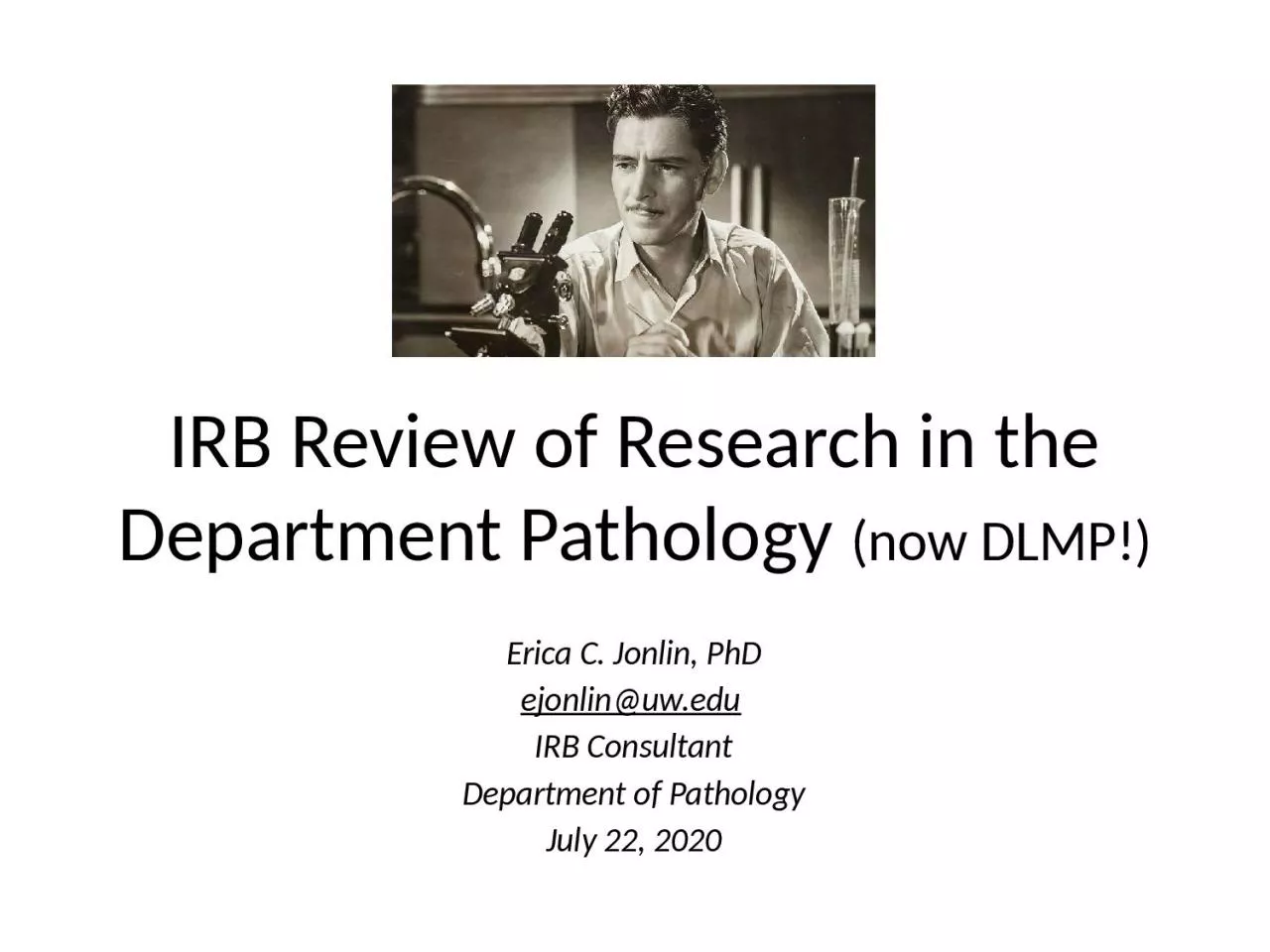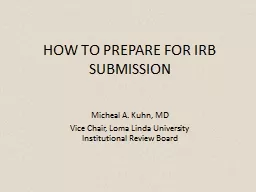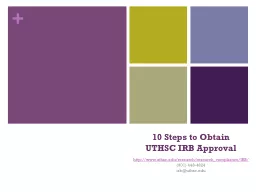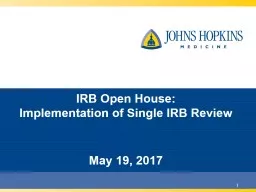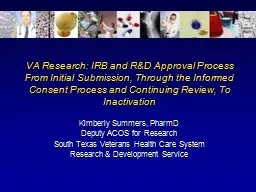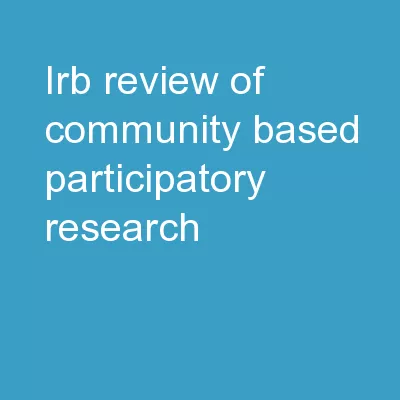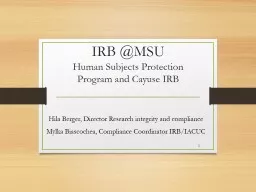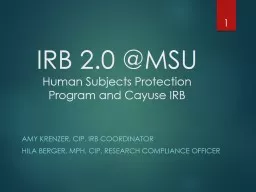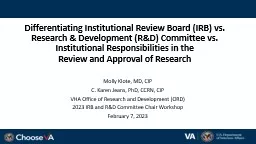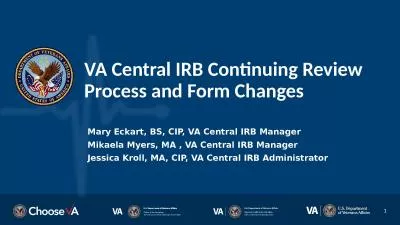PPT-IRB Review of Research in the Department Pathology
Author : WhiteGhost | Published Date : 2022-08-03
now DLMP Erica C Jonlin PhD ejonlinuwedu IRB Consultant Department of Pathology July 22 2020 Institutional Review Boards IRBs An Institutional Review Board IRB
Presentation Embed Code
Download Presentation
Download Presentation The PPT/PDF document "IRB Review of Research in the Department..." is the property of its rightful owner. Permission is granted to download and print the materials on this website for personal, non-commercial use only, and to display it on your personal computer provided you do not modify the materials and that you retain all copyright notices contained in the materials. By downloading content from our website, you accept the terms of this agreement.
IRB Review of Research in the Department Pathology: Transcript
Download Rules Of Document
"IRB Review of Research in the Department Pathology"The content belongs to its owner. You may download and print it for personal use, without modification, and keep all copyright notices. By downloading, you agree to these terms.
Related Documents

